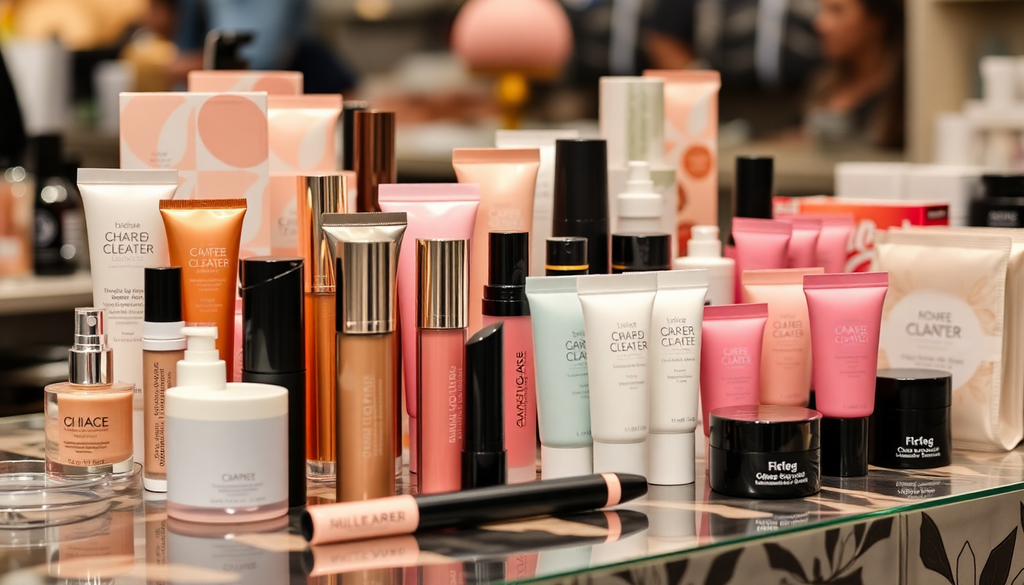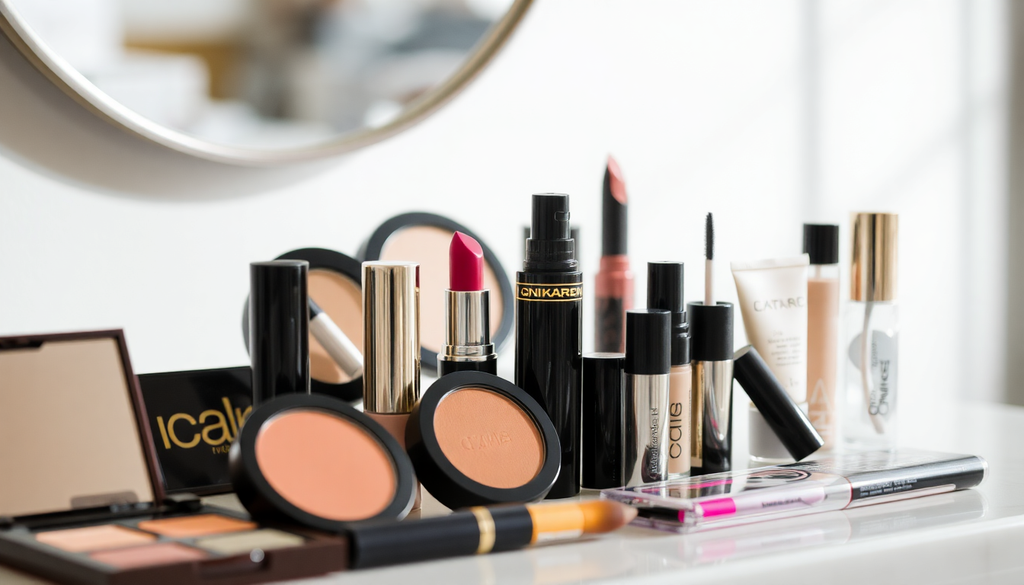
Navigating the Global Makeup Market: Essential Strategies for Launching Your Brand in Key Regions in 2025
Introduction
As the global makeup market continues to flourish, launching a cosmetics brand in 2025 requires a strategic approach tailored to various key regions. The beauty industry is not only about creating great products but also about understanding the intricacies of different markets, consumer preferences, and regulatory requirements. This comprehensive guide will delve into essential strategies for establishing your brand, from understanding local regulations to setting up an online store and leveraging marketing trends.
Understanding Regional Markets
Every region presents unique opportunities and challenges. Below are insights into several key markets that are vital for launching your makeup brand:
1. North America
- Regulations: In North America, particularly the United States, the FDA regulates cosmetics, requiring brands to adhere to strict labeling requirements. Ingredients must be listed clearly, and any claims about the product's effectiveness should be substantiated. Familiarize yourself with the Federal Food, Drug, and Cosmetic Act to avoid legal pitfalls.
- Trends: Clean beauty and sustainability are dominating trends in North America. Brands that prioritize eco-friendly packaging, cruelty-free products, and ingredient transparency are favored by consumers. Additionally, the rise of inclusivity has led brands to expand their shade ranges to cater to all skin tones.
- Marketing: Utilize social media platforms like TikTok and Instagram for influencer collaborations, as visual content drives engagement. Micro-influencers, in particular, can help create authentic connections with niche audiences. Interactive content, such as live makeup tutorials and Q&A sessions, can also enhance audience engagement.
2. Europe
- Regulations: The EU has strict cosmetic regulations. Ensure compliance with the Cosmetic Product Regulation (EC) No 1223/2009, which includes product safety assessments, labeling guidelines, and specific requirements for ingredients. Brands must also register their products with the Cosmetic Product Notification Portal (CPNP).
- Trends: Diversity and inclusivity in beauty products are crucial. Brands should offer a wide range of shades and formulations to cater to various skin tones. Additionally, the 'no-makeup' makeup look and multifunctional products are gaining popularity, appealing to consumers looking for simplicity.
- Marketing: Leverage European beauty fairs and exhibitions, such as Cosmoprof and In-Cosmetics, to showcase your brand and connect with retailers and distributors. Collaborate with local beauty bloggers and fashion magazines to enhance visibility.
3. Asia-Pacific
- Regulations: Be aware of varying regulations across countries like China, Japan, and South Korea. For example, animal testing remains a requirement in China for imported cosmetics, though there have been ongoing discussions about reforms. Brands must also comply with local labeling requirements that can differ from international standards.
- Trends: K-beauty continues to influence global makeup trends. Innovative products like cushion compacts, lip tints, and multi-use cosmetics are gaining popularity. Additionally, the rise of 'skinimalism'—a trend that emphasizes natural beauty and minimal makeup—is shaping consumer preferences.
- Marketing: E-commerce is booming in this region. Collaborate with local influencers on platforms like WeChat, Xiaohongshu, and Instagram to drive brand awareness. Offering exclusive online promotions can also encourage purchases.
4. Latin America
- Regulations: Understanding local import policies and labeling requirements is crucial, as they can vary significantly across countries such as Brazil and Mexico. Brands must comply with ANVISA regulations in Brazil, which require product registration and safety assessments.
- Trends: Bright colors and bold looks resonate well in this market. Brands should consider products that celebrate cultural diversity, including vibrant palettes that reflect local traditions. Additionally, there is a growing demand for organic and natural makeup products.
- Marketing: Use a mix of traditional advertising and social media campaigns. Engage with local communities through events and pop-up shops to create authentic connections. Video content showcasing product application and tutorials can be particularly effective.
5. Middle East
- Regulations: Each country has its own regulations regarding cosmetics. In the UAE, for instance, the Emirates Authority for Standardization and Metrology (ESMA) regulates cosmetics. Ensure that your products are compliant with local standards and obtain necessary approvals.
- Trends: The Middle Eastern market is known for its love of bold makeup looks, including dramatic eye makeup and long-lasting products. Luxury and high-end brands are particularly popular, and the demand for high-quality, premium products is growing.
- Marketing: Leverage platforms like Instagram and Snapchat, which are widely used in the region. Collaborate with local beauty influencers and celebrities to gain credibility and reach a wider audience. Tailored marketing campaigns that resonate with cultural values can enhance brand loyalty.
Setting Up Your Online Store
In 2025, having an online presence is crucial for any makeup brand. Here’s how to effectively set up your online store:
- Choose the Right Platform: Consider e-commerce platforms like Shopify or WooCommerce that offer customizable templates, integration with payment gateways, and inventory management systems. Evaluate your needs and choose a platform that aligns with your business goals.
- Optimize for SEO: Use relevant keywords in your product descriptions, titles, and meta tags to improve search engine rankings. Conduct keyword research to identify popular search terms and incorporate them naturally into your content.
- Mobile Optimization: Ensure your website is mobile-friendly, as a significant portion of consumers shop via smartphones. Optimize loading times, simplify navigation, and ensure a seamless checkout process to enhance user experience.
- Offer Multiple Payment Options: Provide various payment methods, including credit cards, digital wallets, and local payment solutions, to cater to diverse customer preferences.
- Build a User-Friendly Interface: Create an intuitive layout that makes it easy for customers to browse products, read reviews, and complete purchases. Include high-quality images and detailed descriptions to enhance product appeal.
Marketing Your Makeup Brand
Effective marketing strategies are essential to stand out in a saturated market. Here are some key approaches to consider:
- Influencer Partnerships: Collaborate with beauty influencers to reach wider audiences and gain credibility. Choose influencers whose values align with your brand, and consider micro-influencers for authentic engagement.
- Content Marketing: Create engaging content that educates your audience about your products, such as tutorials, behind-the-scenes looks at your brand, and user-generated content. Blogging and video content can help establish your brand as an industry authority.
- Social Media Advertising: Invest in targeted ads on platforms like Instagram and Facebook to reach potential customers based on their interests and behaviors. Use eye-catching visuals and compelling calls to action to drive conversions.
- Email Marketing: Build an email list to communicate directly with your customers. Offer exclusive promotions, product launches, and personalized recommendations to keep your audience engaged.
- Customer Engagement: Encourage feedback and reviews from customers to build trust and credibility. Engage with your audience on social media by responding to comments and messages promptly.
Conclusion
Navigating the global makeup market in 2025 requires a deep understanding of regional regulations, current trends, and effective marketing strategies. By tailoring your approach to each market, setting up a robust online store, and executing innovative marketing campaigns, your brand can thrive in the competitive cosmetics landscape. Stay adaptable and continuously monitor industry trends to ensure your brand remains relevant and appealing to consumers.


